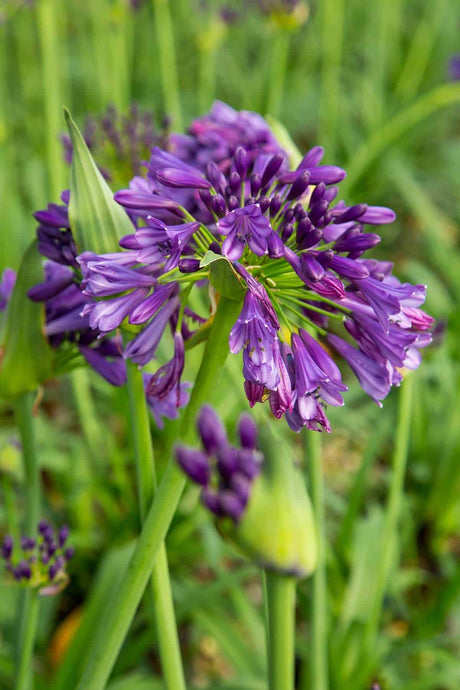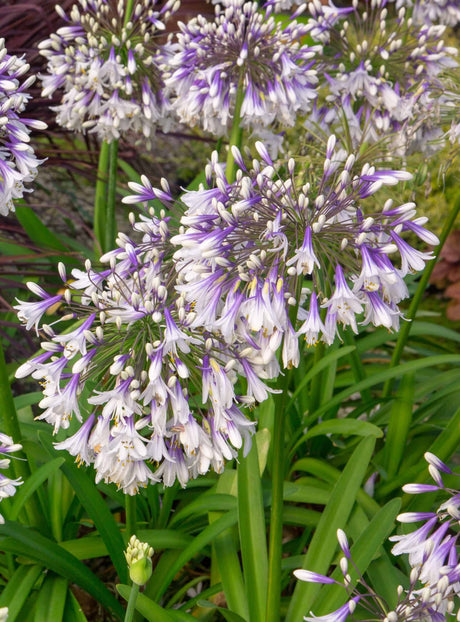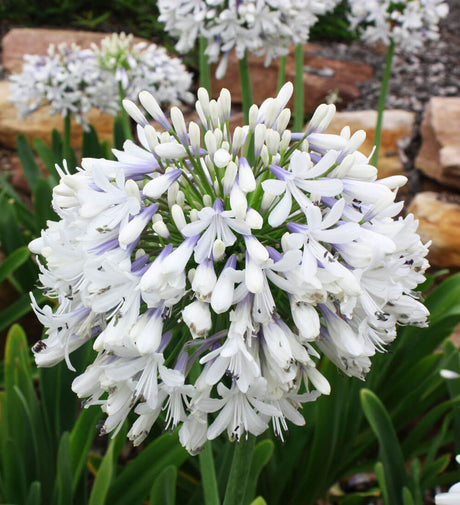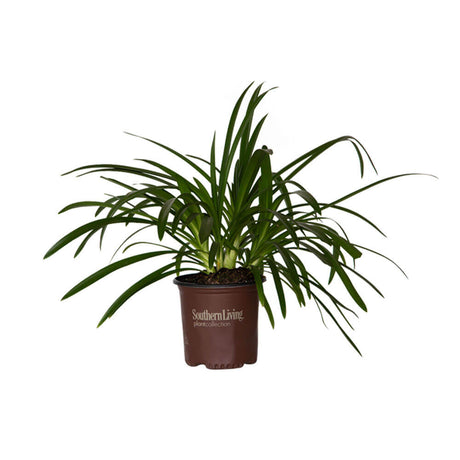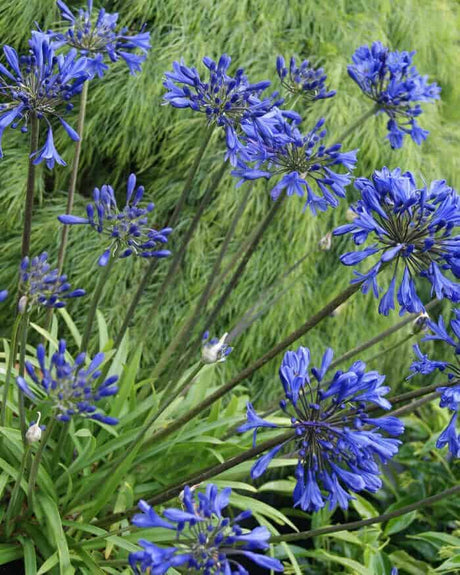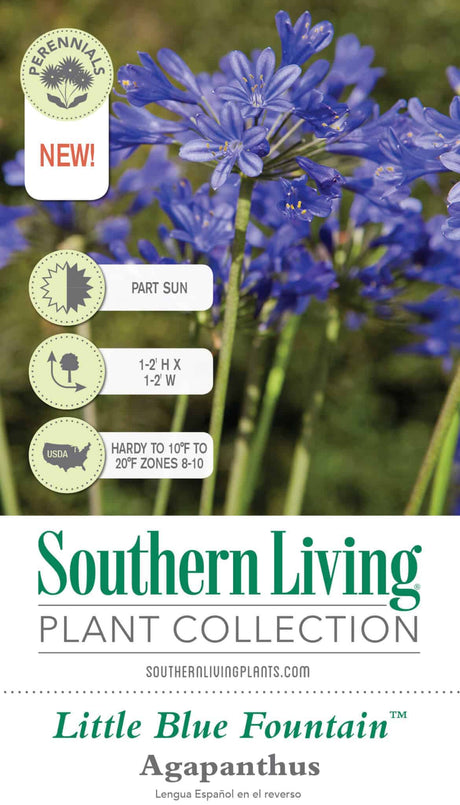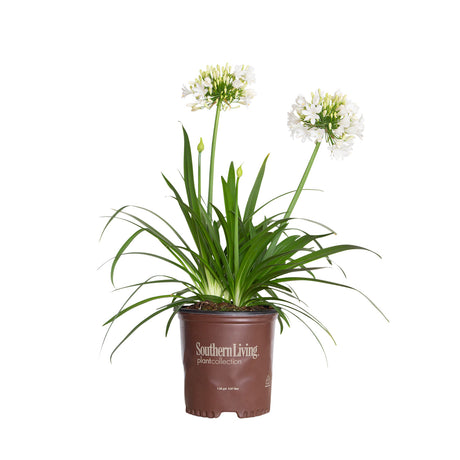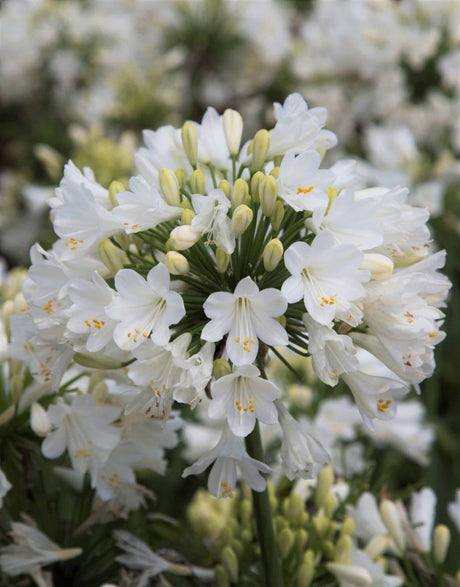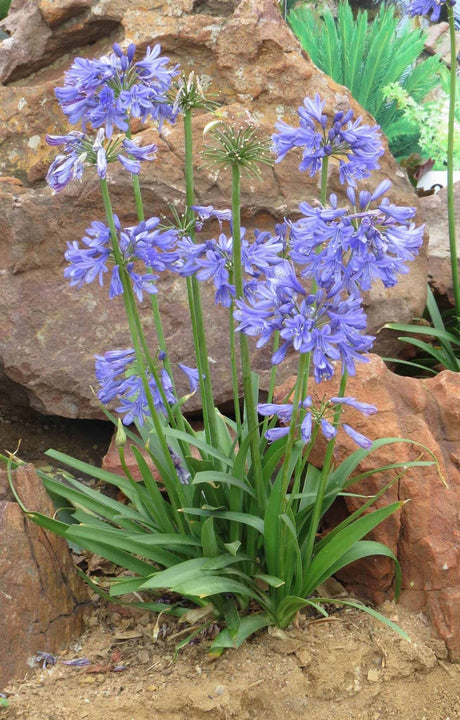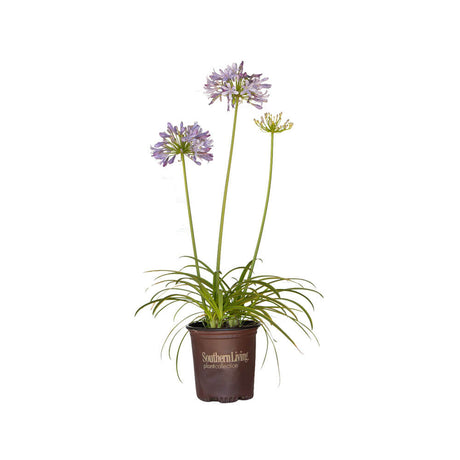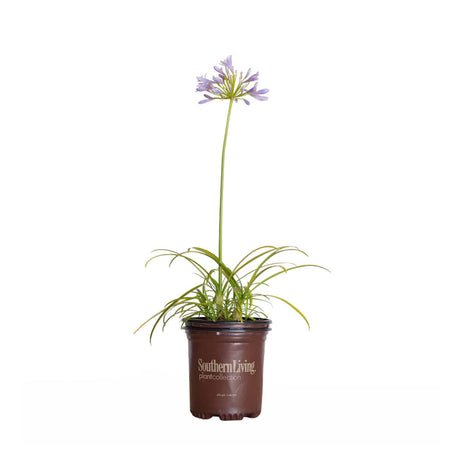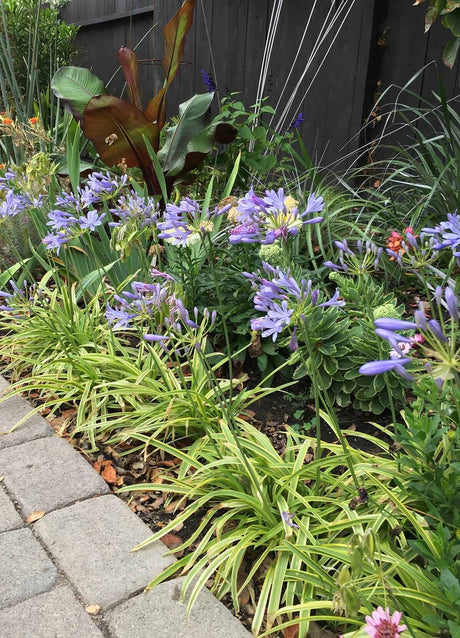Southern Living Plant Collection
(13)From $16.99$19.99Unit price /UnavailableIn stock (45)Southern Living Plant Collection
(12)From $16.99$19.99Unit price /UnavailableIn stock (35)Southern Living Plant Collection
(5)From $16.99$19.99Unit price /UnavailableIn stock (63)Southern Living Plant Collection
(13)From $19.99Unit price /UnavailableLow stock (3)Southern Living Plant Collection
Little Blue Fountain Agapanthus
(10)$19.99Unit price /UnavailableOut of Stock (0)Southern Living Plant Collection
(15)From $19.99Unit price /UnavailableOut of Stock (0)Southern Living Plant Collection
(5)From $19.99Unit price /UnavailableOut of Stock (0)Southern Living Plant Collection
(3)From $19.99Unit price /UnavailableOut of Stock (0)Southern Living Plant Collection
From $19.99Unit price /UnavailableOut of Stock (0)
Agapanthus, also known as Lily of the Nile, are iconic blooming perennials with gorgeous globular bloom clusters. The name "Agapanthus" is Greek in origin, and translates roughly to "love flower." The plant itself, however, originates from Southern African. Therefore, they have made themselves at home in warmer areas of the United States over the past few decades and will certainly continue to delight and amaze in gardens for generations to come.
Why Plant Agapanthus?
There are several great reasons to plant your own Agapanthus.They're very low-maintenance
Once they get going in your yard, there really isn't much you have to do to maintain them. Remove old foliage in early spring, if you like, to make way for new leaves. However, this isn't required. Old foliage will wilt and fall away naturally. They spread by fleshy rhizomes and naturally form clumps of multiple plants, but they won't go wild.They have great foliage texture and many varieties are evergreen
Lily of the Nile are known for their thick, strap-like foliage that ranges from bright green to dark green to variegated yellow and green. Most dwarf varieties have a thinner and shorter version of this type of foliage, while the larger ones have leaves that are reminiscent of a leather belt. All varieties excel at adding some eye-catching texture to your landscape. Not all selections are evergreen, but quite a few of them are. Specifically, the varieties we offer are almost all evergreen. This means that they won't leave your landscape bare during the winter months. These perennials do a phenomenal job of improving their display with each passing year. Outside of each individual variety's growing zone, they can be planted as annuals in seasonal gardens and containers.Agapanthus have uniquely stunning flower globes
In late spring to early summer, buckle in for a festival of flowers unlike any other. This is when they start to send up stalks topped with bracts, filled to the brim with blooms ("bract" is a term for specialized leaves that serve a specific purpose, in this case, protecting emerging blooms). Soon, these pouches of petals begin to open and the blooms spill out. They then arrange themselves in a spherical shape. The individual blooms begin to open at the bottom of the sphere first and finish at the top of the cluster. Each plant in the cluster will send up one stalk of long-lived flowers. Therefore, when you have a decent-sized cluster of several dozen plants, you'll be looking at quite a bounty of flowers every summer. Many gardeners love snipping a few of these long-lasting clusters to use as eye-catching cut flowers in a vase. Need some ideas on how to use these beauties? Here are some tips from the Southern Living Plant Collection for styling your home with Agapanthus.Where Should I Plant Them?
Fortunately, these perennials are pretty versatile and accepting of different planting conditions. Most varieties require Partial to Full Sun exposure. Generally, over 3 hours of direct sunlight is necessary. However, some varieties handle receiving more shade better than others do. We recommend planting them in soil that is rich in organic matter for best results. If your soil is average or poor in quality, mix in some composted manure or rich garden soil to supplement it. Alternatively, apply a light balanced fertilizer in early spring. They prefer regular moisture in the landscape, however, standing water can be an issue and lead to root rot. Try to avoid locations with poor drainage (like heavy clay soil) or rapid drainage (like sandy soil). If your soil has poor drainage, mix in pine bark to improve drainage and aeration. If your soil is sandy, mix in compost or composted manure.When is the Best Time to Plant Agapanthus?
Generally, this will depend on where you're located. Although, both can work for any zone.USDA Zones 9 and below:
Spring is the best time to plant if you're in these zones because it gives your plants plenty of time to establish before winter sets in. We still recommend covering your plants overnight during hard freezes to help ensure their success over their first winter. During the following winters, overnight coverage is only needed in times of unexpectedly intense freezing temperatures.USDA Zones 10 and up:
Winter is generally mild in these areas, so we recommend planting in fall after the summer heat settles down. This will give your plant ample time to root into the ground in preparation for the next summer. Ensure that it's getting enough water during times of extreme heat and drought by increasing your watering frequency.What Type Should I Get?
There are so many dynamic selections to choose from in this species.- Need a small variety? The Little Blue Fountain Agapanthus is one of the smallest in town at only a little over a foot tall (including bloom stalks).
- What about a variegated selection? The Neverland Agapanthus is a dreamy Lily of the Nile with yellow and green foliage and sky-blue and violet-purple flowers.
- Want to maximize blooms? The Ever series of Agapanthus bloom early and rebloom several times through the summer. Check out the purple-blooming Ever Amethyst Agapanthus as well as the beautiful blue Ever Sapphire Agapanthus.
How to Plant:
- Find a suitable planting location for your plants.
- Remember to leave a little room for their clumps to expand out over time.
- Dig a hole three times as wide as the pot that your plants came in.
- Don't dig the hole deeper than what will allow for your plant to sit evenly with the ground around it. For slower draining soils, dig a slightly shallower hole so your plant will sit a couple of inches above the soil around it. Mound the soil around the base of the plant.
- Mix your native soil with some rich garden soil or compost to enrich the ground and encourage healthy growth and expansion.
- Place the plant in the hole and backfill around it with your dirt mixture.
- Water your new planting heartily to help settle the soil, as well as hydrate your plant.
- Now is a good time for a light fertilizer application. If you're planting in mid to late fall or summer, use a root rocket fertilizer. If you're planting in spring or early fall, use a slow-release balanced plant fertilizer. We don't recommend using liquid fertilizer on new plantings.


